Abstract
A method is described for the quantitation of serum antibody to type-specific pneumococcal polysaccharide. The method uses highly purified pneumococcal polysaccharide coated onto human O+ red blood cells by the chromic chloride technique. Each of 14 pneumococcal polysaccharide types was individually coated onto red blood cells and used to determine the antibody response following primary immunization. The method was found to be sensitive, detecting antibody titer increases of several hundred to a thousand-fold. The presence of high preimmunization antibody titers did not obscure the detection of antibody titer increases. The method detected antibody of both the immunoglobulin M and immunoglobulin G class when quantitated after ultracentrifugation and sucrose density gradient separation. By using serum samples obtained from volunteers immunized with a single pneumococcal polysaccharide, the method was standardized resulting in an ability to compare samples taken at different times and obtained from different sources. The method appears to be simple, reproducible, and inexpensive and can be utilized to determine the antibody response following immunization in large population studies.
Full text
PDF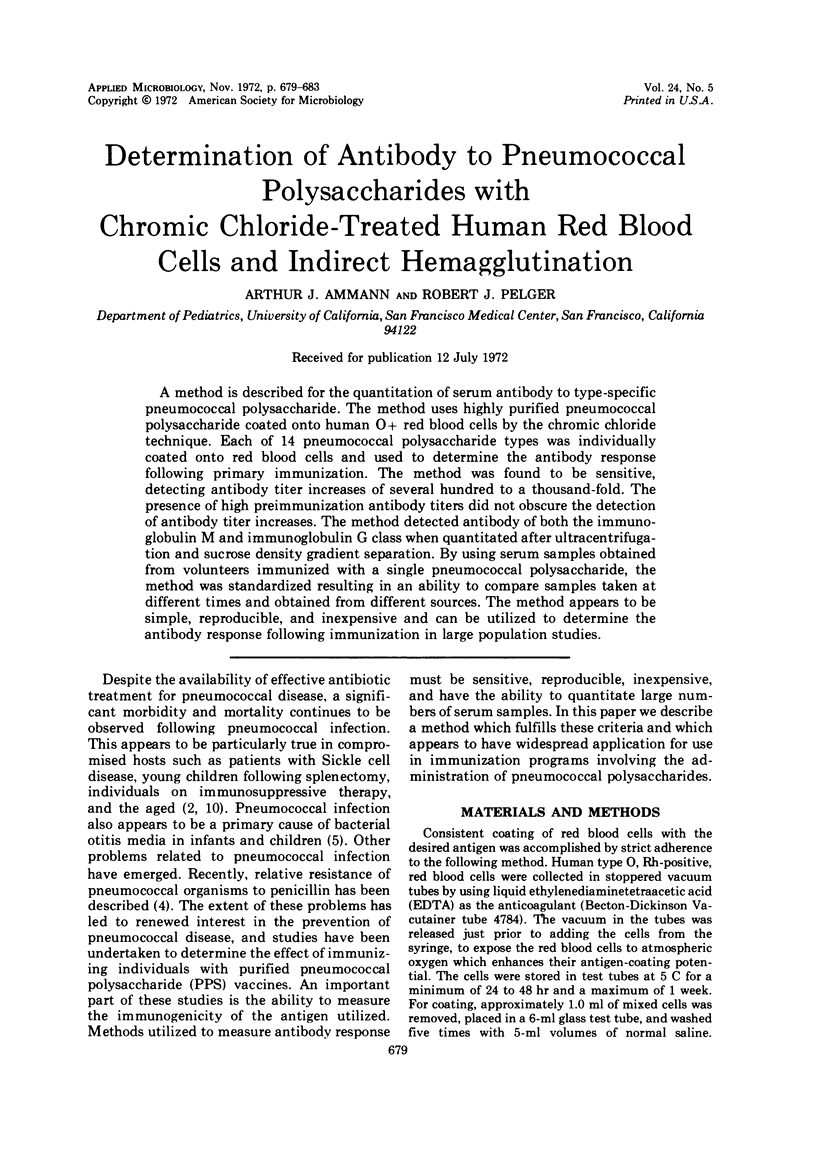
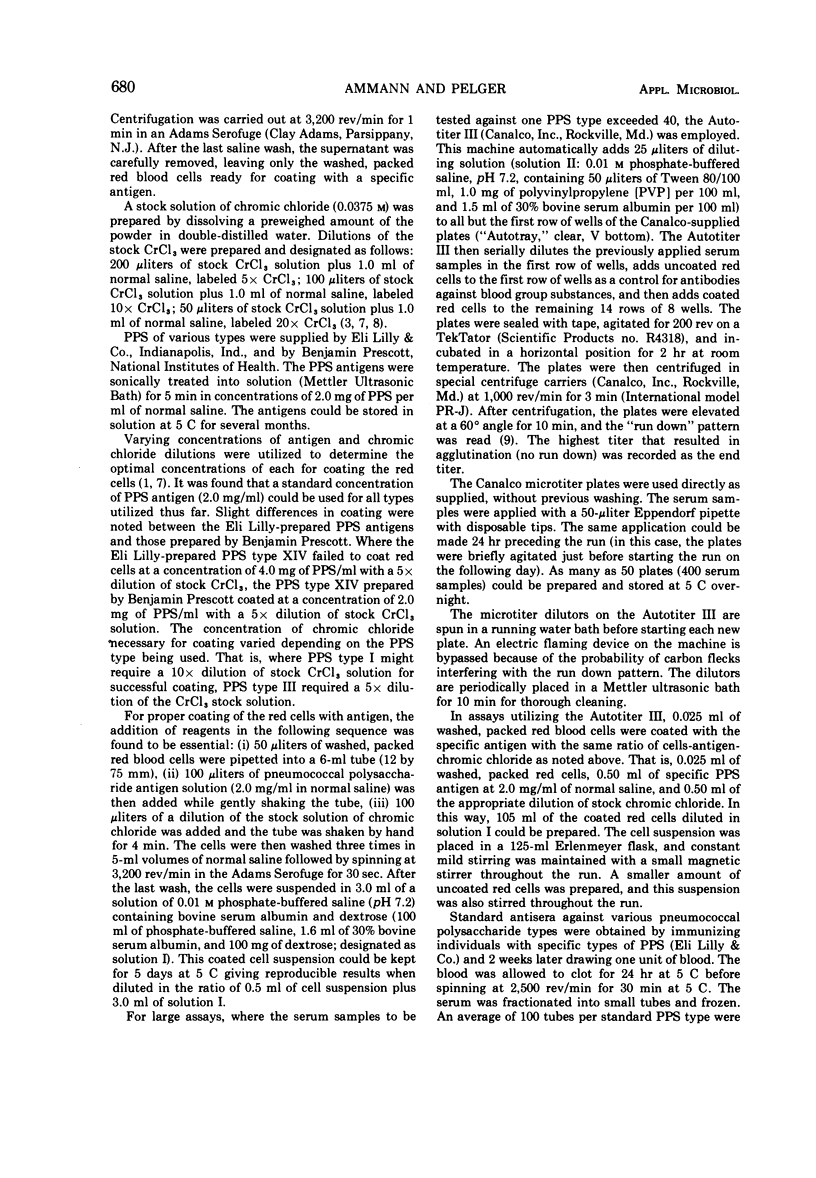
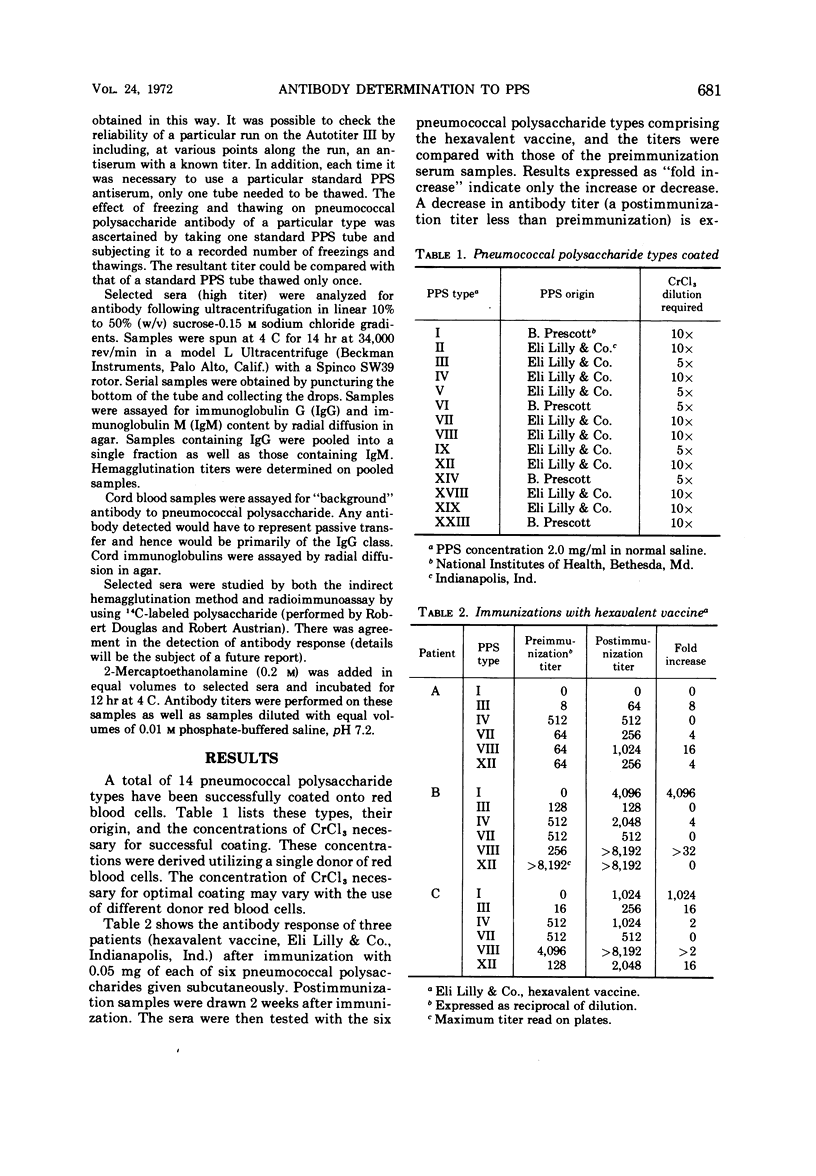
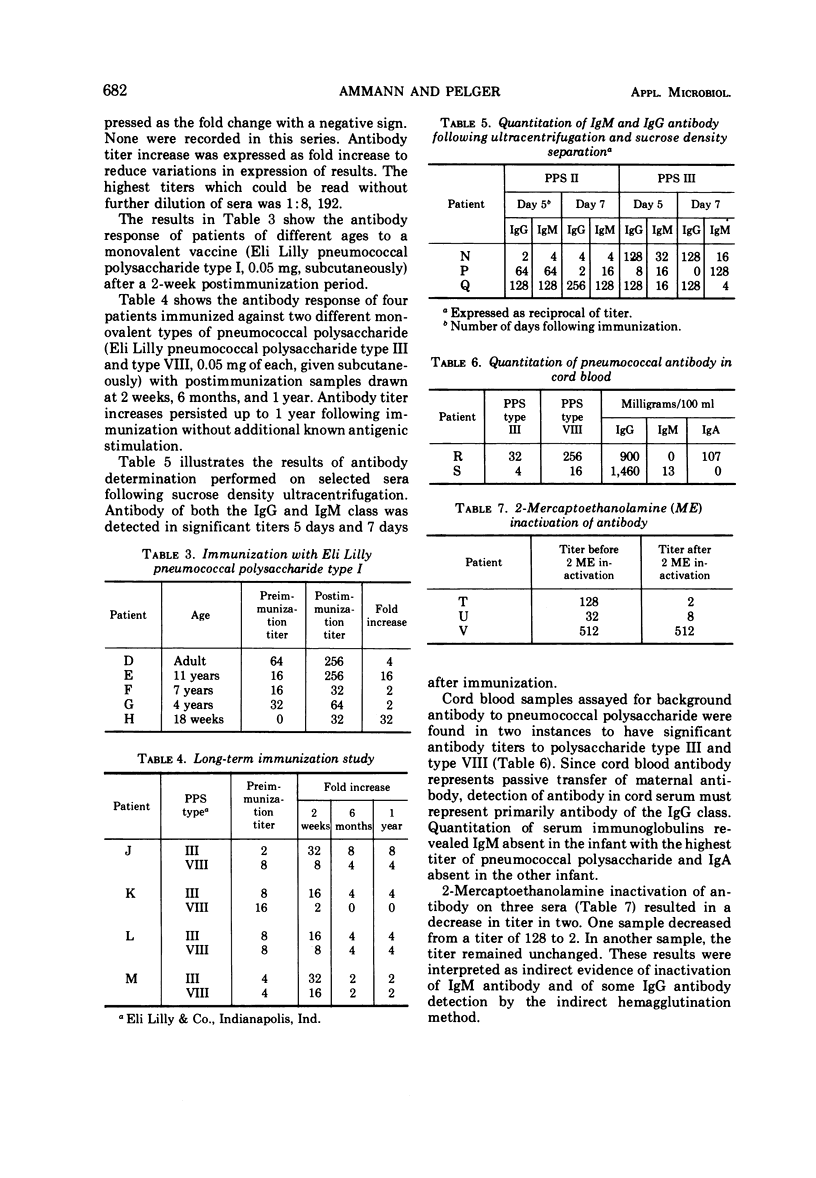
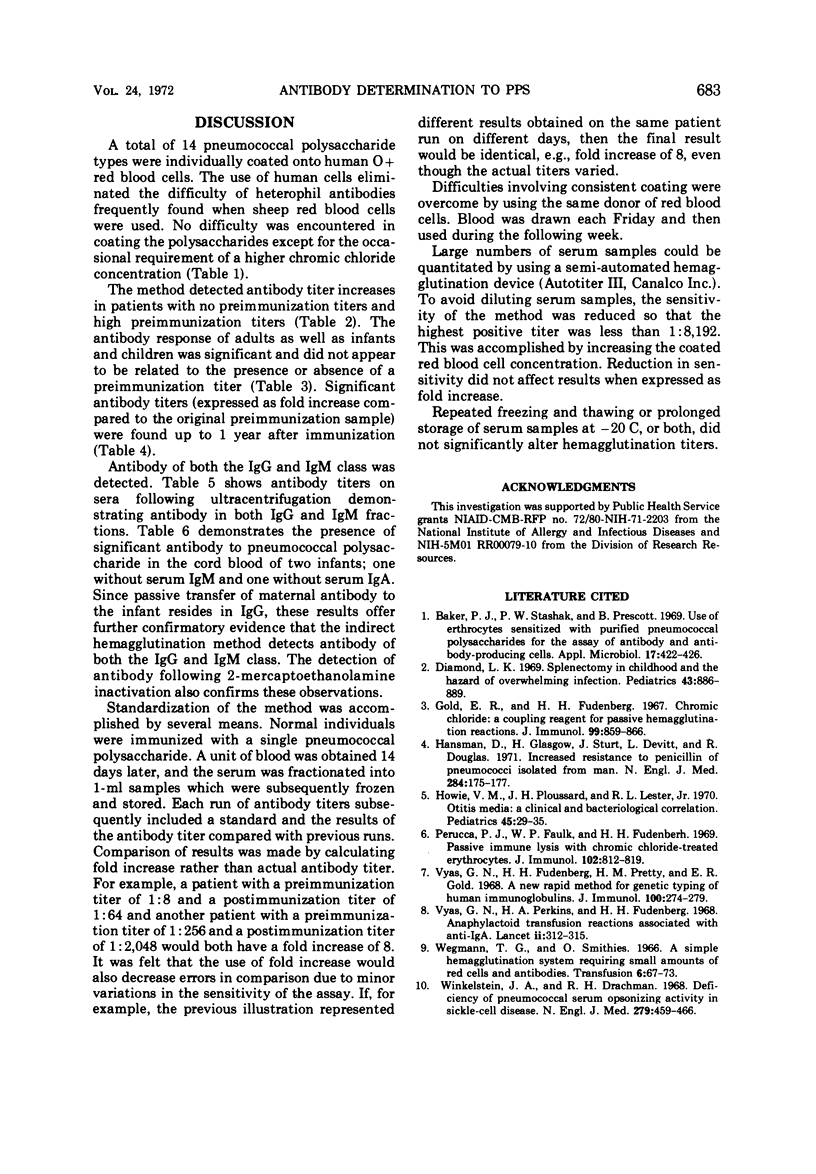
Selected References
These references are in PubMed. This may not be the complete list of references from this article.
- Baker P. J., Stashak P. W., Prescott B. Use of erythrocytes sensitized with purified pneumococcal polysaccharides for the assay of antibody and antibody-producing cells. Appl Microbiol. 1969 Mar;17(3):422–426. doi: 10.1128/am.17.3.422-426.1969. [DOI] [PMC free article] [PubMed] [Google Scholar]
- Diamond L. K. Splenectomy in childhood and the hazard of overwhelming infection. Pediatrics. 1969 May;43(5):886–889. [PubMed] [Google Scholar]
- Gold E. R., Fudenberg H. H. Chromic chloride: a coupling reagent for passive hemagglutination reactions. J Immunol. 1967 Nov;99(5):859–866. [PubMed] [Google Scholar]
- Hansman D., Glasgow H., Sturt J., Devitt L., Douglas R. Increased resistance to penicillin of pneumococci isolated from man. N Engl J Med. 1971 Jan 28;284(4):175–177. doi: 10.1056/NEJM197101282840403. [DOI] [PubMed] [Google Scholar]
- Howie V. M., Ploussard J. H., Lester R. L., Jr Otitis media: a clinical and bacteriological correlation. Pediatrics. 1970 Jan;45(1):29–35. [PubMed] [Google Scholar]
- Perucca P. J., Faulk W. P., Fudenberg H. H. Passive immune lysis with chromic chloride-treated erythrocytes. J Immunol. 1969 Apr;102(4):812–820. [PubMed] [Google Scholar]
- Vyas G. N., Fudenberg H. H., Pretty H. M., Gold E. R. A new rapid method for genetic typing of human immunoglobulins. J Immunol. 1968 Feb;100(2):274–279. [PubMed] [Google Scholar]
- Vyas G. N., Perkins H. A., Fudenberg H. H. Anaphylactoid transfusion reactions associated with anti-IgA. Lancet. 1968 Aug 10;2(7563):312–315. doi: 10.1016/s0140-6736(68)90527-8. [DOI] [PubMed] [Google Scholar]
- Winkelstein J. A., Drachman R. H. Deficiency of pneumococcal serum opsonizing activity in sickle-cell disease. N Engl J Med. 1968 Aug 29;279(9):459–466. doi: 10.1056/NEJM196808292790904. [DOI] [PubMed] [Google Scholar]


